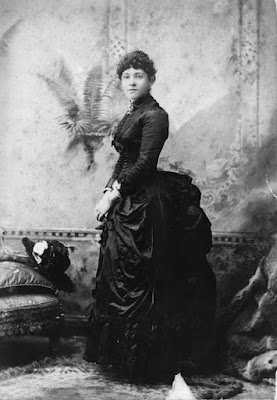While most of us in the West tend to think of the black wedding dress as something new, a gothic fashion statement, or a way to buck tradition, the black wedding dress has a rich cultural history. Its origins can be traced back 3,000 years ago to the Zhou Dynasty in China. In the West, black lace wedding dresses were traditional for Roman Catholic brides in Spain and many brides in the West wore black because it was a color that didn’t show stains and the dress could be worn following the wedding as their good dress.
Black wedding dress in Chinese history
During the Zhou dynasty(1046BC——256BC), wedding dresses worn by Chinese brides were modest, solemn, black, and worn over light red underwear. The bride’s hair was worn up and held in place with a band and hairpin.
Today in China, wedding dresses differ by region. Northern Chinese traditional brides most often wear a dress that is mostly red and decorated with elaborate gold and silver designs. In Southern China, traditional brides prefer a two-piece red dress ornately decorated with a gold dragon and phoenix. Modern couples have stepped away from these traditional dresses to a more simplified wedding dress.
Spanish brides wore black
In Spain, Roman Catholic brides wore black, historically, too. The custom outfitted the bride in a black lace gown, with a black lace veil (mantilla) draped over her head and shoulders. This veil symbolized her vow to love her husband until death.
History of the black wedding dress in the West
White wedding gowns became popular in the Victorian era, following Queen Victoria’s wedding. Before the white dress, most brides in Western Europe wore a variety of colors, but black wedding dresses were a popular choice. Not because it was the most fashionable, but because they were most practical. Wedding dresses were expensive and most women couldn’t afford a special dress to where one time. Instead, they selected a black dress because the dark color didn’t show stains, and the dress could be worn following the wedding.
Today, some brides who choose to wear black think they are bucking tradition, and while they are, they are also returning to tradition. As the saying goes, there’s nothing new under the sun.
* * * *
Some
links in this post are affiliate links. We are a participant in the
Amazon Services LLC Associates Program, an affiliate advertising program
designed to provide a means for us to earn fees by linking to
amazon.com and affiliate sites.
Photo credits: Photo by Murat IŞIK Photo by Bormann Chen








